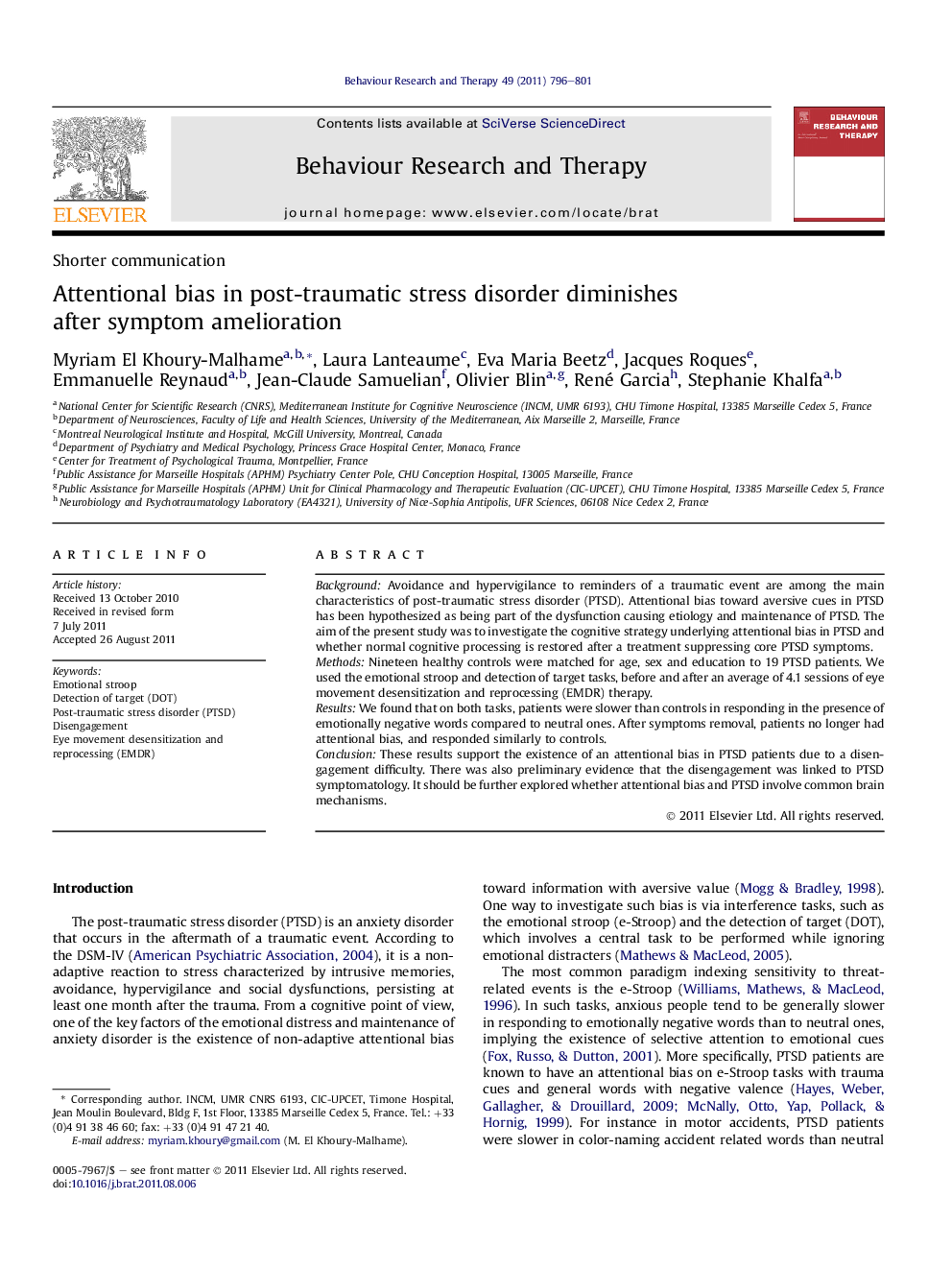| Article ID | Journal | Published Year | Pages | File Type |
|---|---|---|---|---|
| 902006 | Behaviour Research and Therapy | 2011 | 6 Pages |
BackgroundAvoidance and hypervigilance to reminders of a traumatic event are among the main characteristics of post-traumatic stress disorder (PTSD). Attentional bias toward aversive cues in PTSD has been hypothesized as being part of the dysfunction causing etiology and maintenance of PTSD. The aim of the present study was to investigate the cognitive strategy underlying attentional bias in PTSD and whether normal cognitive processing is restored after a treatment suppressing core PTSD symptoms.MethodsNineteen healthy controls were matched for age, sex and education to 19 PTSD patients. We used the emotional stroop and detection of target tasks, before and after an average of 4.1 sessions of eye movement desensitization and reprocessing (EMDR) therapy.ResultsWe found that on both tasks, patients were slower than controls in responding in the presence of emotionally negative words compared to neutral ones. After symptoms removal, patients no longer had attentional bias, and responded similarly to controls.ConclusionThese results support the existence of an attentional bias in PTSD patients due to a disengagement difficulty. There was also preliminary evidence that the disengagement was linked to PTSD symptomatology. It should be further explored whether attentional bias and PTSD involve common brain mechanisms.
► We monitored attentional bias in PTSD patients before and after symptom removal. ► Patients and healthy controls are tested on e-Stroop and DOT tasks. ► PTSD are slower than controls on threatening words in e-Stroop and show a disengagement bias in DOT. ► Attentional bias in patients correlates to symptomatology and diminish after treatment.
